

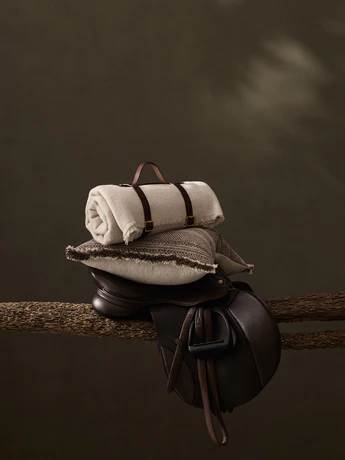

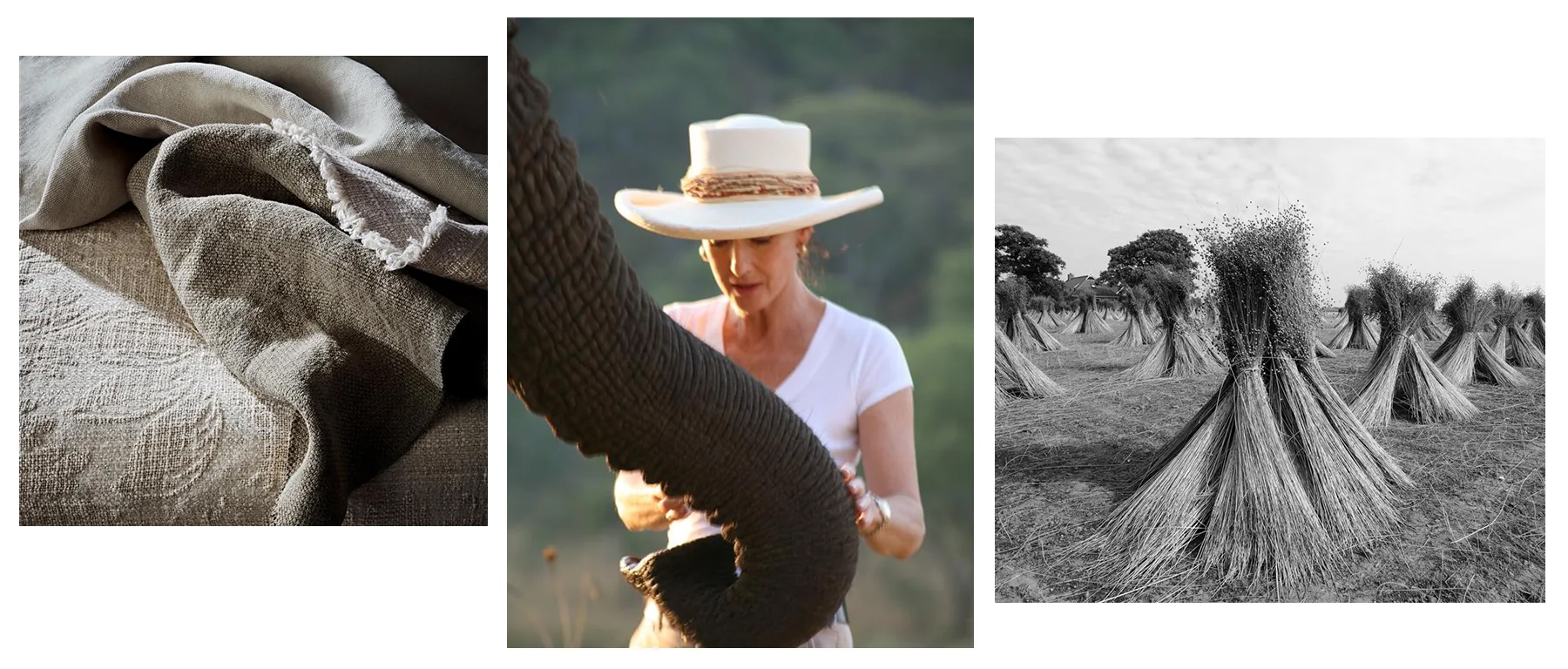


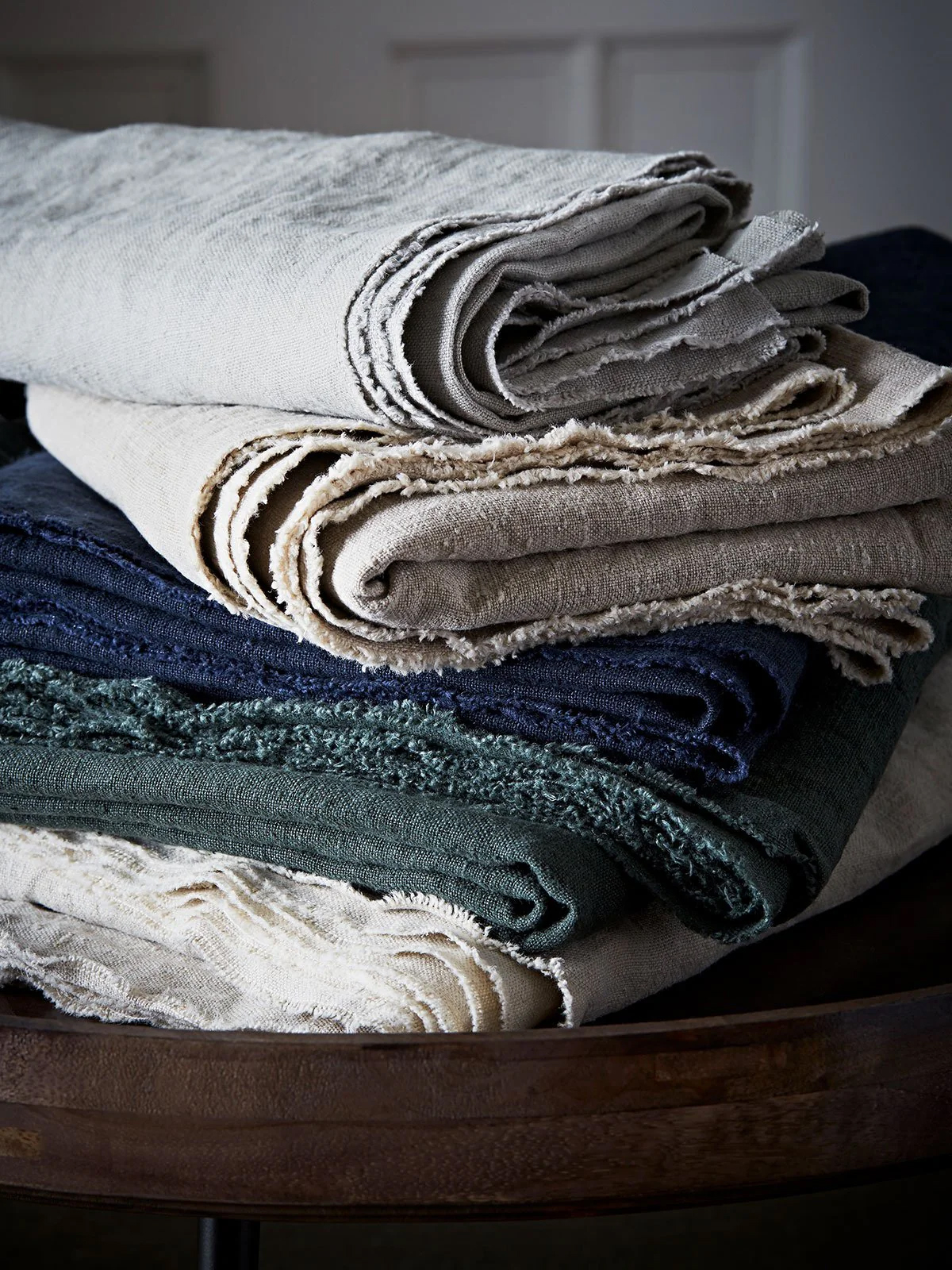

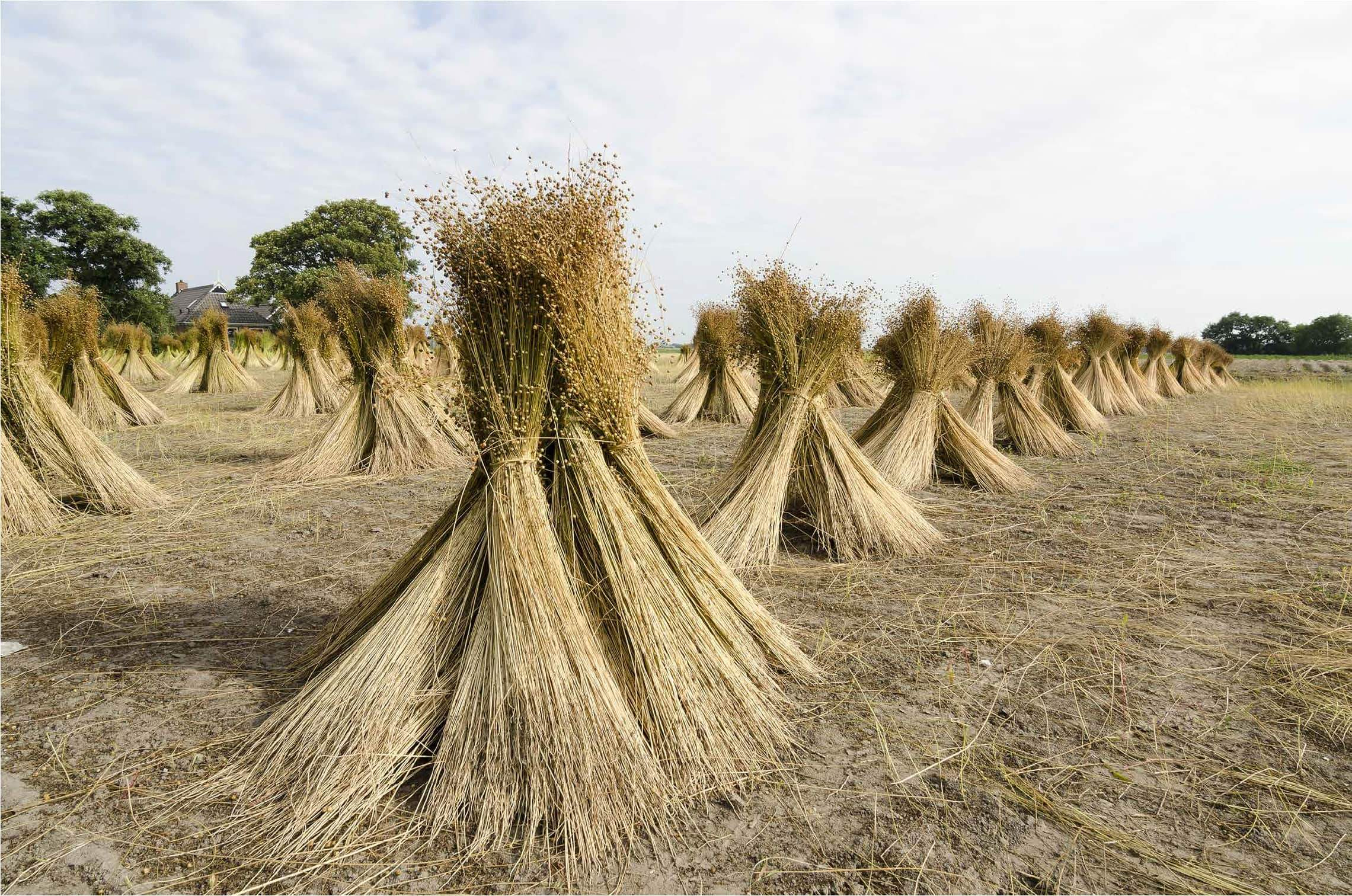
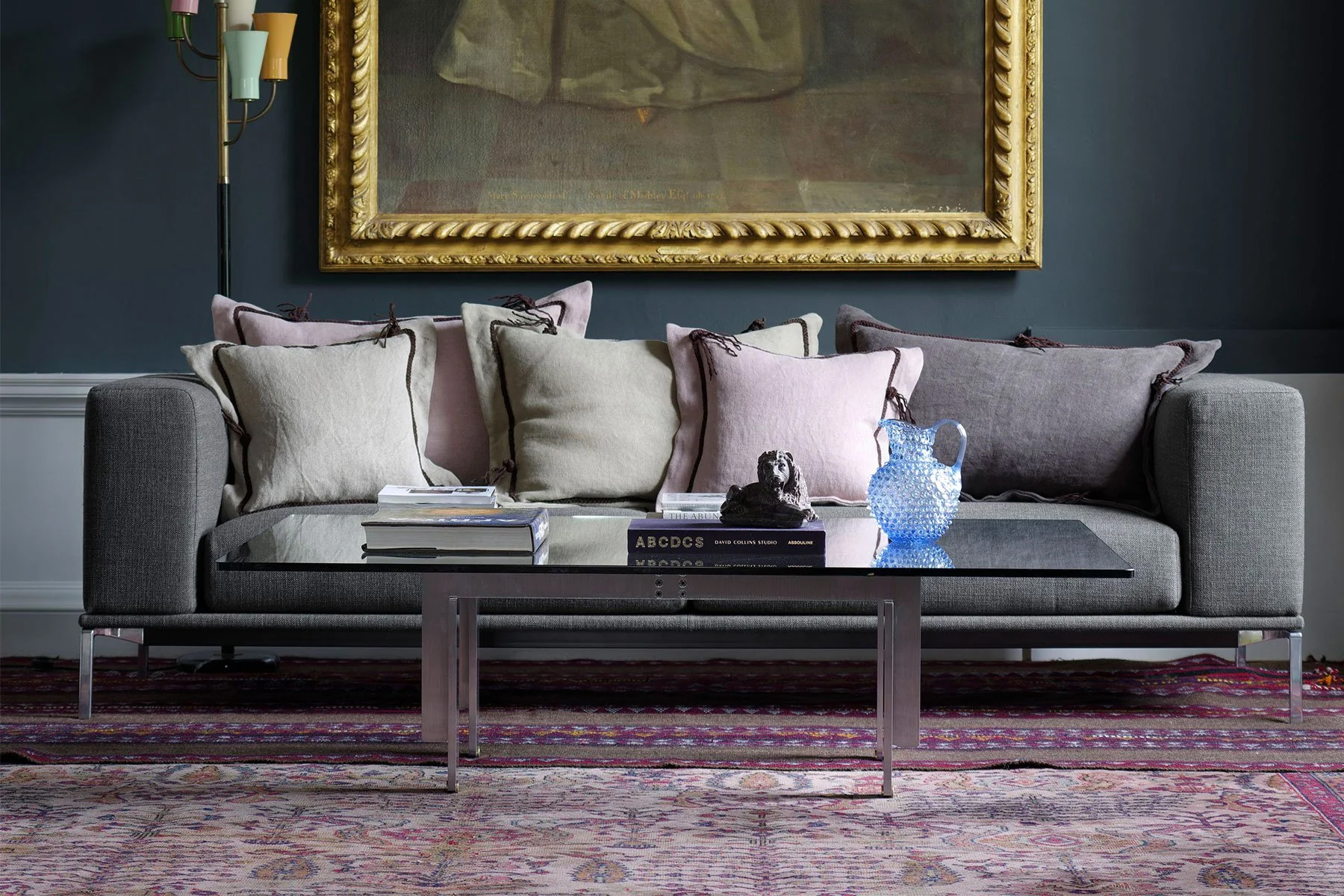
DE LE CUONA
RESPONSIBLY CRAFTED
Fabrics and accessories for interiors, rooted in nature and responsibly crafted from the world's finest fibres.
STORY
An adventurous spirit born out of Africa and a passion for discovery seeking out the best quality natural fibres and the finest artisans to work with.
‘A love of linen and attention to detail first fired my desire to create beautiful fabrics’
BERNIE DE LE CUONA
FOUNDER & DESIGNER
DISCOVERING BELGIUM LINENS & FLAX
While travelling in Belgium, Bernie was introduced to linen and the beauty of this robust yet gentle fabric.
The versatility and ways linen can feel and be handled conquered her mind.
The flax field amazed her, as the best flax was grown here.
DISCOVERING CRAFTSMANSHIP & ANCIENT TECHNIQUES
The next stop was India, where Bernie was inspired by the way Indian craftsmen produced silk – all weaving and finishing was done by hand.
The attention to detail was incredible! She immediately thought that the softening technique can be applied to linen.
DE LE CUONA — ESTABLISHED 1992
With all the knowledge and inspiration from these trips Bernie established de Le Cuona with the passion to make linen fabrics
that the world had never seen before – wonderfully floppy, soft and textured.
These textures, complemented by the distinctive colour palette inspired by Africa, made de Le Cuona’s collections truly unique.
-------
about De Le Cuona's LINEN FIBRE
FLAX LINEN FIBRE
Flax is the oldest fibre known to man but also the most versatile.
It is a luxurious natural fibre that is also strong and durable. Textures range from the raw and robust to the most refined.
ACHIEVING THE FINEST QUALITY
de Le Cuona uses only the best quality Belgian and French linen fibres.
The Flanders region is the best for linen growing and production because of the geographical location.
The Atlantic climate and extremely rich soil allows the flax to grow at its highest of 80cm.
The longer the fibre, the higher the quality of the linen. Using long fibres reduces the number of knots on the fabric surface.
To ensure the highest quality, several batches of flax from different fields, areas and years have to be mixed together by specialist spinners.
The better the batches used for the mix, the higher the quality of linen fabric achieved.
As a result of using the longest fibre and mixing the highest quantities of batches, de Le Cuona achieves some of the most luxurious linen products available.
Working with select farmers means keeping track of the entire process of the linen production from the moment the seeds are planted to the finished linen fabric.
de Le Cuona takes pride in being in such close communication with its linen farms.
Some of its suppliers are part of the Masters of Linen organisation and some comply with the REACH REGULATIONS.
ENVIRONMENTAL BENEFITS OF LINEN
Linen is also one of the lowest-energy, and lowest-water fibres, in comparison to other fibres like silk, wool, polyester, viscose, acrylic or nylon.
Linen grown for de Le Cuona uses only rain water.
River water is used during the washing process and then filtered back into the river.
Concerning the environmental impact of flax and hemp cultures, the evaluation report underlines that these cultures clearly need less fertilizer
and chemical pesticides than replacement cultures.
In addition, they have positive effects on the agricultural eco-systems’ diversity and landscape. In this context,
growing these fibres offers a welcome ‘environmental pause’ in order to maintain soil quality, preserve landscapes and encourage bio-diversity.
Extract of the Advisory Commission’s Report To The European Parliament Brussels, May 2008
BENEFITS OF LINEN FOR LIFESTYLE
Linen is a very durable natural fabric, which makes it perfect for using in interior design. It makes the ideal upholstery, curtains and home accessories due its high rub test.
Linen is very kind to sensitive skin, hypoallergenic and does not support bacteria growth, making it a fabric of choice for bedding and home accessories.
Used for bedding, it regulates the body's temperature, absorbs and evaporates water. Linen products are breathable in hot weather, insulating during cold periods, and known for increasing sleep quality.
Fabrics and accessories for interiors, rooted in nature and responsibly crafted from the world's finest fibres.
STORY
An adventurous spirit born out of Africa and a passion for discovery seeking out the best quality natural fibres and the finest artisans to work with.
‘A love of linen and attention to detail first fired my desire to create beautiful fabrics’
BERNIE DE LE CUONA
FOUNDER & DESIGNER
DISCOVERING BELGIUM LINENS & FLAX
While travelling in Belgium, Bernie was introduced to linen and the beauty of this robust yet gentle fabric.
The versatility and ways linen can feel and be handled conquered her mind.
The flax field amazed her, as the best flax was grown here.
DISCOVERING CRAFTSMANSHIP & ANCIENT TECHNIQUES
The next stop was India, where Bernie was inspired by the way Indian craftsmen produced silk – all weaving and finishing was done by hand.
The attention to detail was incredible! She immediately thought that the softening technique can be applied to linen.
DE LE CUONA — ESTABLISHED 1992
With all the knowledge and inspiration from these trips Bernie established de Le Cuona with the passion to make linen fabrics
that the world had never seen before – wonderfully floppy, soft and textured.
These textures, complemented by the distinctive colour palette inspired by Africa, made de Le Cuona’s collections truly unique.
-------
about De Le Cuona's LINEN FIBRE
FLAX LINEN FIBRE
Flax is the oldest fibre known to man but also the most versatile.
It is a luxurious natural fibre that is also strong and durable. Textures range from the raw and robust to the most refined.
ACHIEVING THE FINEST QUALITY
de Le Cuona uses only the best quality Belgian and French linen fibres.
The Flanders region is the best for linen growing and production because of the geographical location.
The Atlantic climate and extremely rich soil allows the flax to grow at its highest of 80cm.
The longer the fibre, the higher the quality of the linen. Using long fibres reduces the number of knots on the fabric surface.
To ensure the highest quality, several batches of flax from different fields, areas and years have to be mixed together by specialist spinners.
The better the batches used for the mix, the higher the quality of linen fabric achieved.
As a result of using the longest fibre and mixing the highest quantities of batches, de Le Cuona achieves some of the most luxurious linen products available.
Working with select farmers means keeping track of the entire process of the linen production from the moment the seeds are planted to the finished linen fabric.
de Le Cuona takes pride in being in such close communication with its linen farms.
Some of its suppliers are part of the Masters of Linen organisation and some comply with the REACH REGULATIONS.
ENVIRONMENTAL BENEFITS OF LINEN
Linen is also one of the lowest-energy, and lowest-water fibres, in comparison to other fibres like silk, wool, polyester, viscose, acrylic or nylon.
Linen grown for de Le Cuona uses only rain water.
River water is used during the washing process and then filtered back into the river.
Concerning the environmental impact of flax and hemp cultures, the evaluation report underlines that these cultures clearly need less fertilizer
and chemical pesticides than replacement cultures.
In addition, they have positive effects on the agricultural eco-systems’ diversity and landscape. In this context,
growing these fibres offers a welcome ‘environmental pause’ in order to maintain soil quality, preserve landscapes and encourage bio-diversity.
Extract of the Advisory Commission’s Report To The European Parliament Brussels, May 2008
BENEFITS OF LINEN FOR LIFESTYLE
Linen is a very durable natural fabric, which makes it perfect for using in interior design. It makes the ideal upholstery, curtains and home accessories due its high rub test.
Linen is very kind to sensitive skin, hypoallergenic and does not support bacteria growth, making it a fabric of choice for bedding and home accessories.
Used for bedding, it regulates the body's temperature, absorbs and evaporates water. Linen products are breathable in hot weather, insulating during cold periods, and known for increasing sleep quality.
